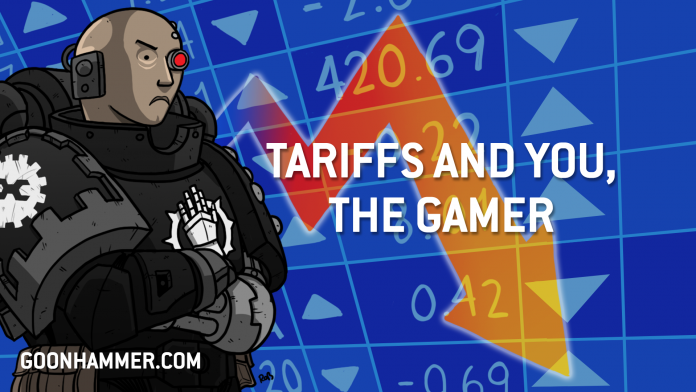This article was last updated 9th April.
April 2nd, 2025 was Donald Trump’s self-proclaimed “Liberation Day,” shocking the world as he set out via Executive Order a new set of tariffs against almost every country on Earth. This set of tariffs were the first salvos of a global trade war. Previously the administration’s tariffs were focused on Mexico, Canada and China, countries that the administration considered most egregious aggressors against the US trade deficit.
Hi, my name is Zach. I’m a publisher of roleplaying games with an undergraduate degree in Economics which I’m keen to use here on Goonhammer dot com. One of the things I do a lot as a product and project manager is sourcing, freight, and customs work. I’m here to talk you through what these tariffs mean for you, the gamer.
I’m going to start by explaining in simple language what trade deficits and tariffs are, then walk through how this is generally going to affect the games ecosystem and then break it down by sub-category (TCGs, board games, wargames, RPGs, etc).
The general output is that this is bad for producers, and then bad for everyone else. Tariffs make things more expensive for importers, companies who then sell those imported goods. These costs are inevitably passed on to consumers, and this is going to make your games more expensive, and cause fewer new games to be brought to the market.
What Is a Tariff?
A tariff is a tax on imported goods or services. Essentially, whenever an item crosses a border from one country to another, the importer pays a fee.
Tariffs are designed to protect the domestic economy that imposes them. Typically, the goal of a tariff is:
- National Security: Secure a domestic industry important to national security, in case you go to war and you want to make sure you can produce it without importing it. Even if producing goods is more expensive domestically, you can keep that industry price competitive with foreign imports using tariffs. This is for stuff like oil, minerals or commodities.
The ability for the Executive Branch of the US Government to use Executive Orders to impose tariffs is meant to be used purely for these purposes to cover what US law referred to as a “national emergency.” I guess Trump’s argument is that the trade deficit is a “national emergency” and the Congress or the Supreme Court could declare this not a national emergency. Goonhammer.com is not the place for non-lawyers to speculate about the misuse of executive powers.
- Unfair Competition: Protecting domestic jobs in vital industries struggling to compete on price with overseas companies. This is for stuff like cars, beef or mobile phones.
- Trade Balance: If your company exports out more goods and services than imports in, it has a Trade Surplus. A Trade Deficit is the opposite, when your economy imports more than it exports. Previously, wisdom has been that Surplus good and Deficit bad, but increasingly economists think this is not true. If you want your economy to export more than it imports, you can impose tariffs to stop imports and “improve” your trade balance (but increasingly economists think this is not true). [1].
These prices are based on the price of the imported goods. If a good is being transported before it has been sold, this is based on the production cost. If it has already been sold, it’s based on the sale price.
Companies who import stuff from other countries like making money, and a tariff cuts down on margins, so companies avoid taking a hit to margins by passing the costs of these tariffs onto consumers and as a result, goods become more expensive.
For a while, basically everyone in orthodox economics has understood tariffs are a bad idea and they don’t work. The entire world has been moving towards free trade for decades.
A 2021 study published in the World Bank Economic Review reviewed the effects of tariffs across 151 countries from 1963 to 2014 “tariff increases are associated with persistent, economically and statistically significant declines in domestic output and productivity, as well as higher unemployment and inequality, real exchange rate appreciation, and insignificant changes to the trade balance.” [2]
What Are These Tariffs?
The Liberation Day Executive Order is “Regulating Imports with a Reciprocal Tariff to Rectify Trade Practices that Contribute to Large and Persistent Annual United States Goods Trade Deficits”. You can read it via the link in our sources. [3]
China is being hit the worst with a new 34% tariff, which stacks on the existing 20% tariff for 54% total. China does a lot of manufacturing for the games industry, so we’ll talk about this later.
Japan is being hit with a 24% tariff – this will have major effects on video games. The EU is hit with 20%. Everyone is hit with 10%, including the United Kingdom, vitally important for readers of this website.
You can read more about the specific rates for your country in an annex to the Executive Order itself. [4] If they’re not here, or in Canada or Mexico, they get the 10% “”minimum baseline tariff.”
What Does This Mean for Everyone?
Most games sold in the US are sold via a process called distribution. Most people don’t buy games directly from the publishers (we call this “direct to consumer,” or D2C), they buy them from webstores, Friendly Local Gaming Stores (FLGS) or resellers.
Publishers can’t have a direct trade relationship with every single gaming store in the US (there might be 5000 of them according to ICv2 distribution stats, an industry trade mag). Instead, as a publisher you work with a specialist distributor, like Asmodee, Flat River, GTS or Southern Hobby. Distributors buy your game from you at about 40% of retail price and sell to the store at around 60%.
I make RPGs, and when I price a book I try to sell it in retail at about ten times the production cost (including getting it to the US, like shipping and tariffs). This is called “10x”. Sometimes you can only “5x” your product (cost = 20% of retail).
If you sell directly to consumers at 10x, your production going from 10% of retail to 15% of retail (assuming a 54% Chinese tariff) means you’re no longer 10xing, you’re now 6.66x-ing and you lost a bit of margin. Roughly one eighteenth.
If you sell into a game store at 10x, your production cost going from 10% to 15% means you just lost a sixth of your margin. If you were only 5x-ing, which is common in board games, your price going from 20 to 32% means you just lost 60% of your profit margin.
Your board game-focused FLGS just got nuked from orbit. Everything they sell is going to cost 50% more.
While crowdfunding is direct, it is also delayed by months or even years between the sale and the production and shipping. There’s going to be a lot of people who already bought a load of games, but someone is going to have to cough up that 54% (hopefully of production cost, also possibly of retail cost) to import it to the US.
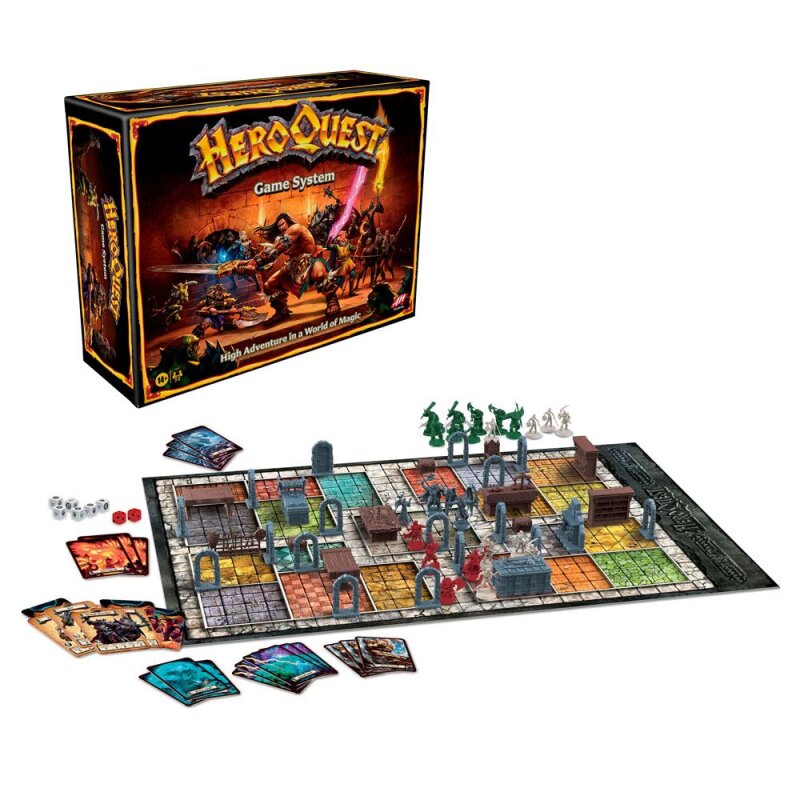
Board Games
If a board game contains tokens, wood, metals, lots of cardboard components or miniatures, it’s probably made in a Chinese factory. It is exceptionally difficult to make complex board games in the US.
Moving production back into the US is not simple. I can’t explain it much better than this article by Super Heumann Creative:
“Another aspect of manufacturing that gets forgotten in all the political rhetoric is the fact that simply bringing factories back to the USA won’t necessarily lower prices; a fact we learned pretty fast. The reason things are cheaper to manufacture in China is A, the level of expertise and efficiency they have in the industry is very high, and B, the fact that they pay their workers significantly less than we do in the US. Simply put, you have to pay people in the United States more money to work in a factory than they do in China. Will this always be the case? Who knows, but it’s the reality right now…and has been the reality for decades.
We found that producing a board game here in the states would cost us almost double what it would in China, meaning we would have to charge double in order to pay for everything.”
It’s worth mentioning that Superheumann could manage to produce their games for twice what they cost in China, only AFTER spending millions of dollars on machinery and while owning their own warehouse/factory, and not charging themselves a profit margin like you would if this is outsourced. Even a 54% tariff doesn’t make up half of that difference.
You also can’t simply just “make American” in the short or even medium term because now everyone else will be trying to make American. The demand for domestic production is going to lead to an increase in prices, production times, and skill crunch. There’s only so many machines you can use, and if we suddenly need more, a lot of those machines are made in China. Board games can’t move production to the US, so prices are going up to match.
This is apocalyptic for big board games in FLGSs. Maybe some board game producers can scrape by moving to D2C webstore models. There is going to be a race out of China to find other countries capable of producing games like this. My gut says Turkey is going to do well here. They’re only on a 10% tariff and they’re pretty capable when it comes to cardboard.
There’s also going to be a run towards high-margin simple games, meaning more simple components and cards. You can make these in the US right now if you work with specialist card printers and use simple and low- quality boxes.
It’s not just me who thinks this. Meredith Placko, CEO of Steve Jackson Games, echoes a lot of what I’m saying here in this article [6]. In her own words, “Tariffs, when part of a long-term strategy to bolster domestic manufacturing, can be an effective tool. But that only works when there’s a plan to build up the industries needed to take over production. There is no national plan in place to support manufacturing for the types of products we make. This isn’t about steel and semiconductors. This is about paper goods, chipboard, wood tokens, plastic trays, and color-matched ink. These new tariffs are imposing huge costs without providing alternatives, and it’s going to cost American consumers more at every level of the supply chain.”
RPGs
If you dig through Annex II of the Executive Order,there is a list of exemptions to the tariffs, organised by Harmonised Tariff Code (HTC). These HTCs are basically numeric codes for different product types, organised into sections of increasing details. Think of it as like the Dewey Decimal system but for customs.
Different tariffs, laws, restrictions and taxes are held under different HTCs. A common one is 95049090 “Puzzles and Games”, but the one I know best is HS code 490199, which covers “printed books, brochures, leaflets and similar printed matter, whether or not in single sheets – other”. This one appears in the exemptions list, likely because books are “educational” and often pay reduced VAT / Sales Tax rates in many countries.
Essentially, because of this Annex it appears that books are exempt from these tariffs. Most RPGs are either PDFs (which aren’t imported) or are books made of paper, which means the industry has likely dodged an absolute bullet.
However, dice are not exempt, nor are minis, nor box sets full of books or pamphlets. Dice, box sets, miniatures, tokens, and slipcases are normally made in China, so they’re in “board game” trouble. Sometimes you can package a non-book item with a book under what is referred to as the “essential character” clause, but this is risky and that’s a whole separate article.
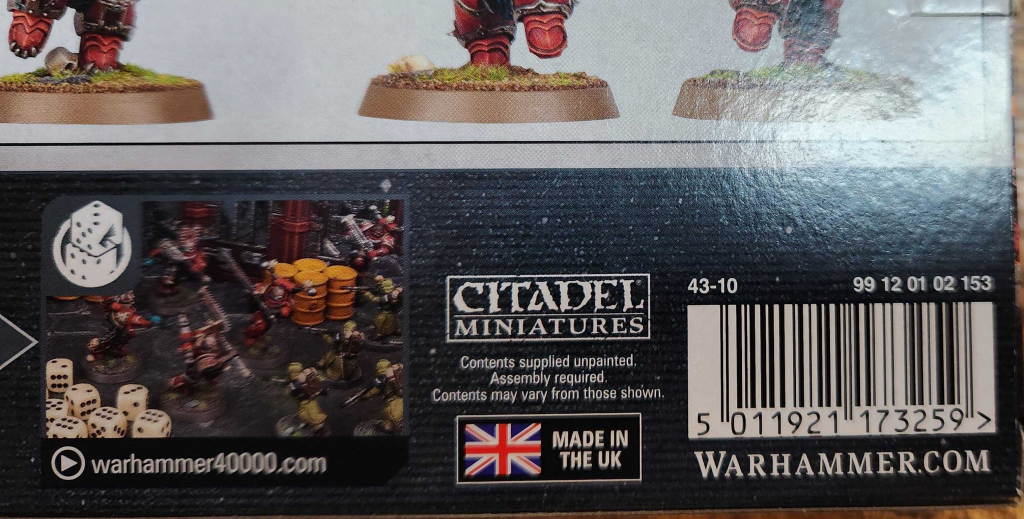
Wargames
It’s worth breaking down wargames into two categories: Games Workshop and non-Games Workshop, because of how big GW and how domestically focused they are.
Games Workshop is based in the UK and has always prided itself in keeping all its miniatures production in the UK. The UK is one of the 10% minimum baseline tariff countries, so they get off lightly there. The benefits of vertical integration and domestic production are paying dividends for GW here and if they wanted to they could just eat the tariff, keeping prices fixed in the short term while competitors cannot do the same.
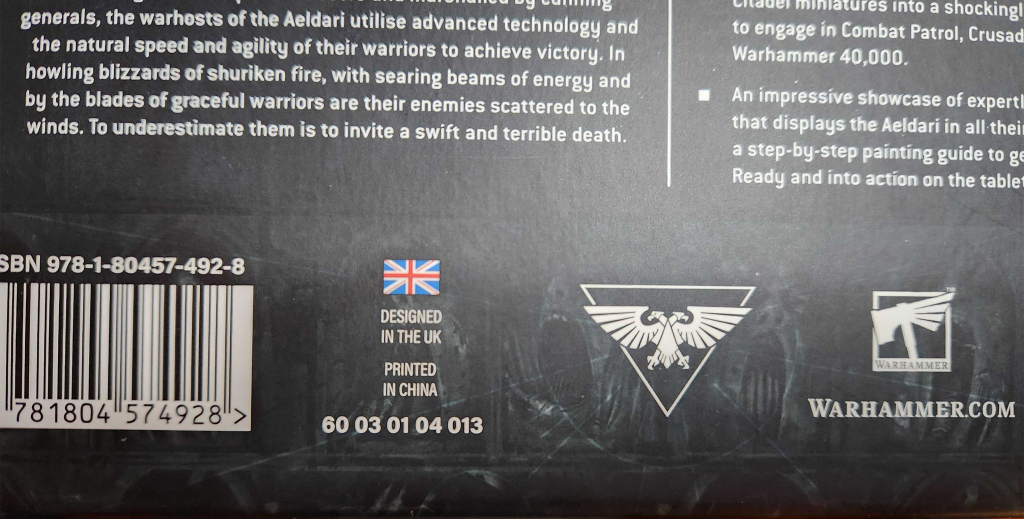
White Dwarf magazine is printed in the UK but most of GW’s books are printed in China (see: that “Designed in the UK, Printed in China” labels on the back of your Codex or battletome), but as explained in the RPGs section, books are likely exempt under Annex II. For Games Workshop products this likely means only a small increase in prices on kits brought in from the UK.
That said, while the majority of Games Workshop plastic production is done in the United Kingdom, some kits – typically terrain and accessories such as the new Battlefield Trophies kit – are manufactured in China, as can be seen on their packaging. These are the most likely products in the range to see price increases as a result of tariffs, but they represent a very small and specific piece of Games Workshop’s business.
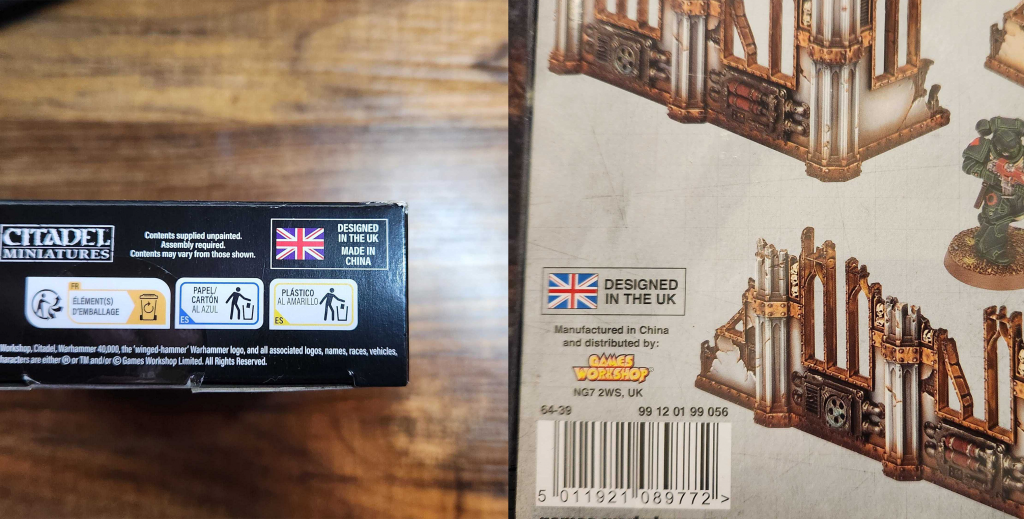
GW does have a distribution facility in Memphis where they used to do limited plastic manufacturing, and they previously did metal manufacturing out of Glen Burnie, Maryland, but it is Goonhammer’s understanding that all the manufacturing happens in Nottingham now and has been for some time. There’s a possibility that these tariffs could spur Games Workshop to re-open US production, though it’s extremely unlikely their Memphis facility could handle US demand and would likely need substantial work to be converted back from a distribution center. As a company Games Workshop is well equipped to weather this storm – the company carries very little debt and has built itself a sizeable “war chest” of cash assets – enough to operate for multiple years on current annual operating costs – and while they could certainly look to reinvest in overseas production, we doubt this will happen.
For non-Games Workshop products, the messaging is a lot more mixed. Operating metal and resin machines is something historically done a lot domestically, and even plastic injection moulding is achievable. It all depends on whether your favourite toy soldier outfit has invested in their own machinery, or outsources it to others overseas. Companies like Corvus Belli (Infinity) and Freecompany (Eldfall Chronicles) work with Unicool for the production of their PVC resin miniatures, which are produced in China.
A lot of UK companies are going to be in the same boat as Games Workshop and get hit by the 10% margin. Companies like Renedra (who work with Warlord Games, Fireforge and Perry Miniature, amongst others), Victrix and others do their plastics in the UK.
It’s not impossible to make plastic minis inside the US. Wargames Atlantic produces their plastic kits in the US in Florida with a company called Altera Industrial. [8]
It’s worth understanding that the industiral equipment used to make your Space Marines wasn’t invented for miniature wargaming. Its most common uses include automotive parts, packaging and electronic components.
The common internet suggested solution of “just use 3D printing” is not really a viable alternative. 3D printers are most frequently imported from China, and both the raw 3D printing resin and its precursors are usually of Chinese origin.
TCGs
The situation with trading card games varies widely. The good news for gamers is that barely anyone prints in China. The space is dominated by Cartamundi, who print (amongst lots of other things) Magic the Gathering and Yu-Gi-Oh!, with facilities in Dallas, Belgium, and Japan. Some card games are distributed in such quantities that their manufacture is split by region and printed domestically.
This is good news for enjoyers of cardboard crack, and I expect the stranglehold these games have on the local game store environment to only grow as board games become more expensive.
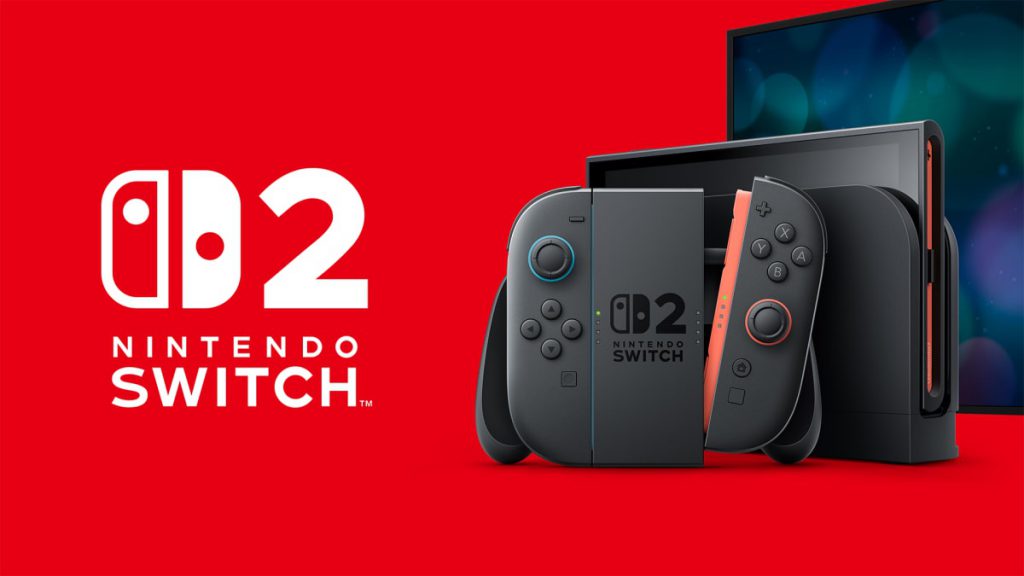
Video Games
Although born in the United States in the 1970s, the two largest console manufacturers in the world – Sony and Nintendo – are Japanese companies, and do not manufacture their hardware in the United States. We’ve already seen an immediate impact of these tariffs as Nintendo announced that, while the Switch 2 would be going up for pre-orders on April 9 in the United States, that date has been pushed back while the company evaluates the potential impact of tariffs [9] Although the Switch 2 was announced on April 2 with a $449.99 retail price, it is unlikely that will be the actual price if the 24% tariff on Japanese goods is upheld.
The majority of video game hardware is currently produced in China and Vietnam, two of the countries hit hardest by tariffs. Although Nintendo has historically retained higher margins on hardware than other console manufacturers, video game consoles are typically sold at lower (or even negative) margins in order to reduce the barrier to entry to new consumers and create a larger install base, recouping the investment later through software sales and licenses.
Endnote
This is round 1 of what will likely be a series of escalating bouts. Once the US’s trading partners retaliate, another round of tariff increases are likely, and those will be worse than the current ones.
The most interesting thing I learnt while talking to companies is that no one is going to start raising their prices yet. Many of them are waiting to see where the complicated back-and-forth of the trade war will shake out and stabilize, especially once (presumably) some exemptions are in place. Most of companies will also have lots of products that are already imported, before any restock or new products.
We reached out to Modiphius and they had the following to say when talking about tariffs: “We produce books in Europe, our resin miniatures in the UK, but a lot of our board games and plastic miniatures in China, which has seen the highest tariff increase to 54%. We can’t comment right now on if our prices may increase, as we’re still looking at our product budget lines and waiting to see what the final tariffs settle at before making any long-term decisions.”
As far as I can tell, no one is really sure if this important thing called the “de minimis exemption” exists anymore. I can’t go into more technical detail this far into the article, but this basically means no customs are paid on orders under $800 in value that enter the US. We know it’s gone for China, but it might soon disappear for everyone, and that makes things even more awkward.
The final word is that prices are going up; the only question is how much. Sometimes companies are going to be able to increase prices and be fine, but most of the time the price increases will cause a sharp decrease in demand. Stores are going to go under. Even categories which seem less affected will be, as US distro and retail begins to suffer. Companies outside the US are going to be affected, as a huge amount of their customer base is in the US.
Even if you think you’re going to escape these tariffs, you aren’t. Even if you buy (or produce) minis or trading cards or books, or buy (or sell) things produced exclusively domestically, the ecosystems are going to be hurt by this. Distributors and friendly local gaming stores are in danger. There is no way to win if the largest economy in the world (26% of global GDP) explodes due to a cost of living crisis that was bad BEFORE all of this got started. And if you don’t live in the United States you may be spared the direct price increases that result, but you’re likely to still catch the residual effects, such as fewer new games being made or games employing fewer complex plastic pieces.
Good luck, everyone. Please remember to support the people whose games you buy and play, lest the world collapse around us.
On a personal note, I think Trump thinks it’s called a trade war because it’s something he thinks the US can win. It’s actually called a trade war because everyone loses.
An Update: 12:28 EST, 7th April 2025
Fourteen minutes after this article was posted, Trump (via his social media platform TRUTH [10]) threatened to increased tariffs on China by an ADDITIONAL 50% taxes, bringing the total at 104%, unless they drop their own tariffs by tomorrow.
“May you live in interesting times,” they said.
An Update: 03:46 EST, 9th April 2025
As of midnight last night, tariffs against China have now been increased to 104%. Everything that was true at 54% is now more true for 104%.
This is not a final state of tariffs. In the words of the order [11]:
“[s]hould any trading partner retaliate against the United States in response to this action through import duties on U.S. exports or other measures, I may further modify the [Harmonized Tariff Schedule of the United States] to increase or expand in scope the duties imposed under this order to ensure the efficacy of this action.”
An Update: 03:39 EST, 9th April 2025
Second patch note for the tariffs in one day.
Good news for everyone not China. Trump blinked and tariffs have gone back down to the 10% minimum baseline tariff for non-China countries.
China, however, has gone to 125%. Absolute insanity.
An Update: 12:56 EST, 10th April 2025
The White House has confirmed Chinese tariffs are now at 145%.
Sources
[1] “Analysis: Trump rails against trade deficit, but economists say there’s no easy way for him to make it go away”. Washington Post.
[2] Furceri, Davide; Hannan, Swarnali A; Ostry, Jonathan D; Rose, Andrew K (2021). “The Macroeconomy After Tariffs”. The World Bank Economic Review. 36 (2): 361–381. doi:10.1093/wber/lhab016. hdl:10986/36630. ISSN 0258-6770.
[3] “Regulating Imports with a Reciprocal Tariff to Rectify Trade Practices that Contribute to Large and Persistent Annual United States Goods Trade Deficits whitehouse.gov.
[4] “Regulating Imports with a Reciprocal Tariff to Rectify Trade Practices that Contribute to Large and Persistent Annual United States Goods Trade Deficits: ANNEX I”. whitehouse.gov.
[5] “My Year in Manufacturing Games” Superheumann Games.
[6] “April 3, 2025: Tariffs Are Driving Up Game Prices Now” Steve Jackson Games.
[7] “Regulating Imports with a Reciprocal Tariff to Rectify Trade Practices that Contribute to Large and Persistent Annual United States Goods Trade Deficits: ANNEX II”. whitehouse.gov.
[8] “Made in the USA” Wargames Atlantic.
[9] “Nintendo Switch 2 Preorders in U.S. delayed because of Trump’s tariffs NBC News.
[10] “@realDonaldTrump” Truth.
[11] “AMENDMENT TO RECIPROCAL TARIFFS AND UPDATED DUTIES AS APPLIED TO LOW-VALUE IMPORTS FROM THE PEOPLE’S REPUBLIC OF CHINA” whitehouse.gov.
Have any questions or feedback? Drop us a note in the comments below or email us at contact@goonhammer.com. Want articles like this linked in your inbox every Monday morning? Sign up for our newsletter. And don’t forget that you can support us on Patreon for backer rewards like early video content, Administratum access, an ad-free experience on our website and more.
